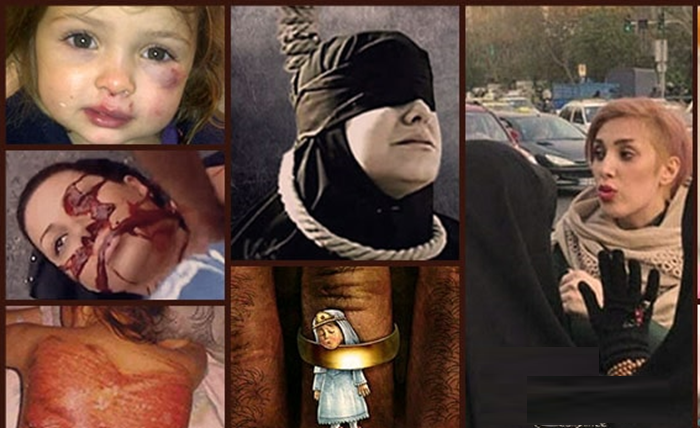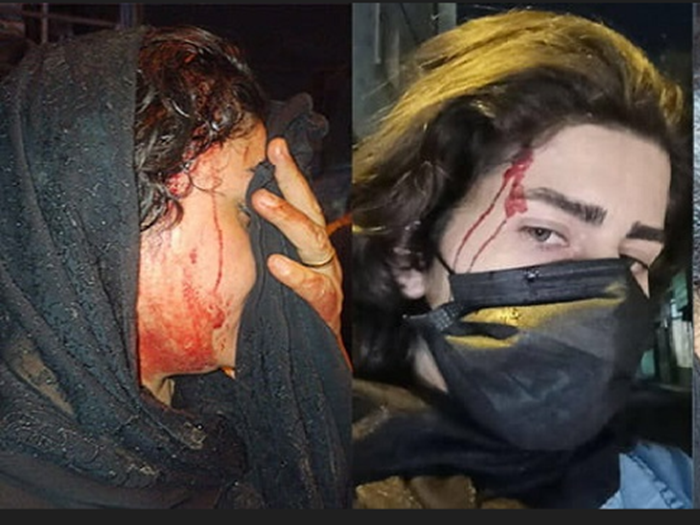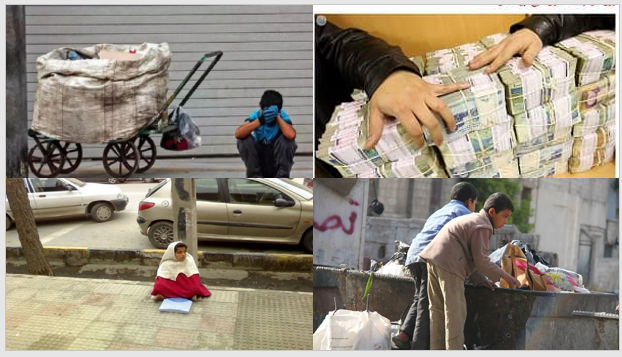
The clerical regime systematically enforces a brand of violence that is physical, mental, economic, and political, targeting women and girls without restraint.
At the core of this state-sponsored violence is the enforcement of the Mandatory Hijab. Rooted in a misogynistic interpretation of Islam, the Iranian Constitution empowers 27 government agencies, including the notorious State Security Force and “guidance patrols,” to harshly penalize women for non-compliance with hijab laws. These enforcers do not hesitate to resort to acid attacks and stabbing to instill fear and obedience.
Reports by the Iranian parliament in 2018 indicated a stark disconnect between the populace and the regime: 70% of Iranian women oppose the compulsory veil, yet the regime’s brutal enforcement persists. The punishments meted out for defiance are severe and unjust. In a chilling instance, three women received a combined sentence of over 55 years for merely protesting the hijab. These sentences are emblematic of the broader persecution women face in Iran.

Forced child marriages remain a bleak reality, with girls as young as 13 legally wedded off and the parliament rejecting proposals to raise the marriage age. The result: an estimated 600,000 underage girls enter matrimony each year. The Iranian regime also enforces cruel punishments such as executions and floggings. A mere suspicion of female adultery can trigger a death sentence, as seen in the case of a university student who was later subjected to flogging upon appeal.
Such punishments extend to trivial matters like unpaid school fees or attending parties, underscoring the regime’s draconian stance on women’s behavior. Female political prisoners face long-term solitary confinement, torture, and neglect. Reports of sexual violence by Iranian security forces surfaced during the protests in January 2020, highlighting the state’s use of sexual abuse as a tool of repression.
Domestic violence and honor killings are also rampant. In 2018, over 77,000 women sought medical help after domestic abuse, and honor killings continue with legal impunity, as in the harrowing case of Romina Ashrafi, a 14-year-old girl murdered by her father.

The Iranian regime’s response to international condemnation has been perfunctory at best. The VAW (Violence Against Women) bill, mired in 8 years of delays, was finally approved by the Judiciary in 2019 but has been gutted of its effectiveness and remains unadopted by the government.
In conclusion, the unabating violence against Iranian women is a direct result of state sponsorship and institutionalization by law. It is a clarion call to the international community and human rights organizations to intensify pressure on the Iranian regime and demand accountability for the unrelenting gender-based violence within its borders.

MEK Iran (follow us on Twitter and Facebook), Maryam Rajavi’s on her site, Twitter & Facebook, NCRI (Twitter & Facebook), and People’s Mojahedin Organization of Iran – MEK IRAN – YouTu







